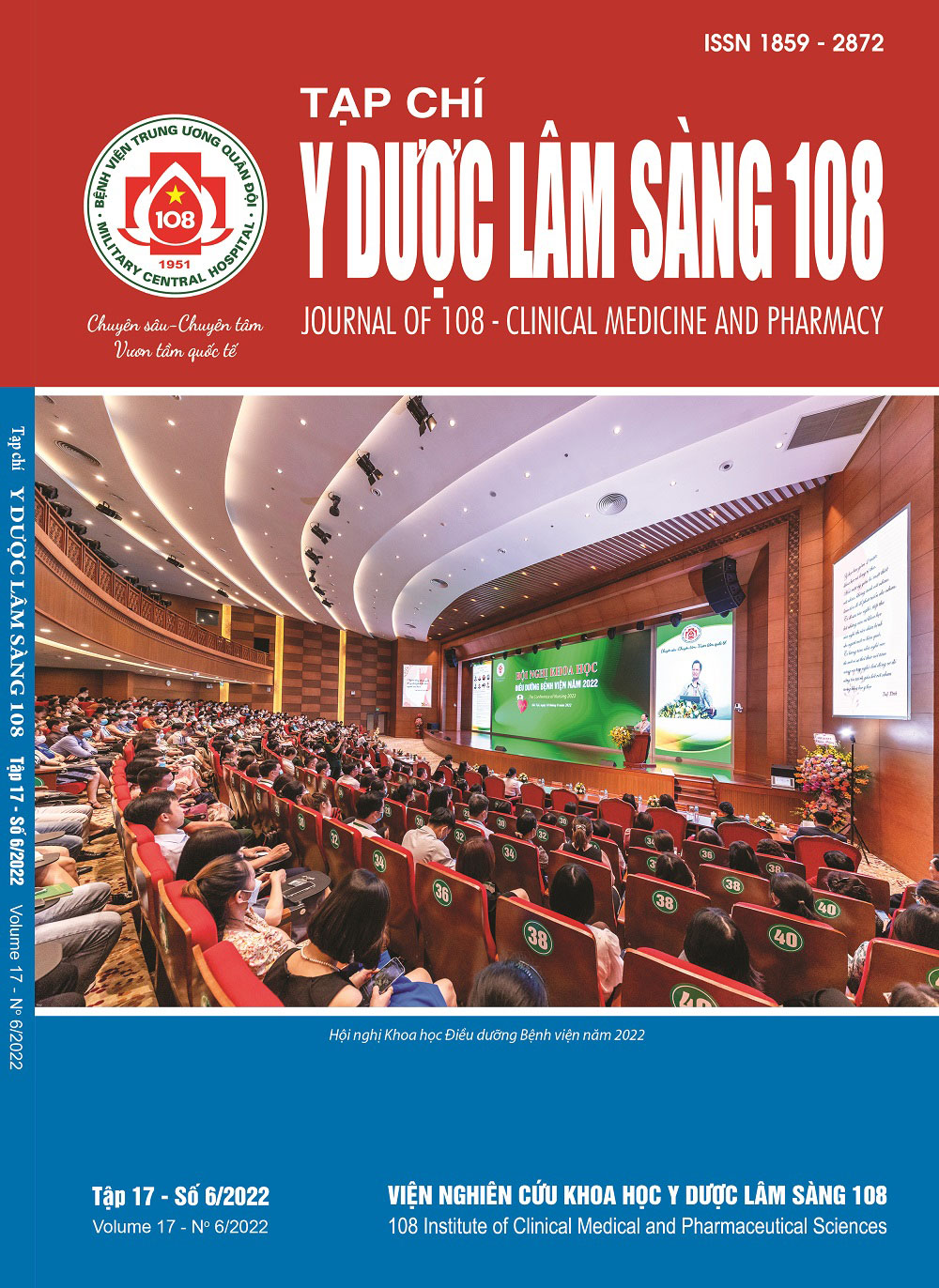The clinical and radiographic characteristics of panfacial fracture
Main Article Content
Keywords
Abstract
Objective: To describe the epidemiological, clinical, and radiographic characteristics of panfacial fractures at 108 Military Central Hospital. Subject and method: Forty-eight patients with panfacial fractures were treated at 108 Military Central Hospital between May 2017 and May 2020. Method: A cross-sectional descriptive study. Result: A total of 48 participants were examined, of which 97.9% were male. The prevalence was highest among patients aged 19-39 (75%). The most common cause of panfacial fracture was traffic accidents with an incidence of 93.7%. 48 patients had bone deformities with an incidence of 100% and 42 patients had malocclusion after facial bone fracture (87.5%). There were 100% of midfacial fractures and 79.2% of lower facial fractures. There were 4 different forms of panfacial fracture, which are FULM (18.8%), FUL (20.8%), ULM (56,2%), and FUM (4.2%). Conclusion: Among panfacial fracture patients, the males were more popular with an incidence of 97.9%. The prevalence of 19-39-year-old patients was 75%. The most common cause of panfacial fracture was traffic accidents with an incidence of 93.7%. The prevalence of patients with both midfacial and lower facial fractures was 56.2% and the ones with both upper facial and midfacial fractures were 20.8%. The number of patients with three layers of facial fracture at the same time was at least.
Article Details
References
2. Lê Thanh Huyền và Hoàng Tiến Công (2012) Tình hình chấn thương Răng hàm mặt điều trị tại Bệnh viện đa khoa Trung ương Thái Nguyên năm 2011. Tạp chí Khoa học & Công nghệ 89(1), tr. 270-275.
3. Nguyễn Quốc Đức (2004) Nhận xét lâm sàng 760 trường hợp chấn thương hàm mặt tại Viện Răng Hàm Mặt Hà Nội. Y học thực hành(11), tr. 19-21.
4. Trần Văn Trường và Trương Mạnh Dũng (1999) Tình hình chấn thương hàm mặt tại Viện Răng Hàm Mặt Hà Nội trong 11 năm (1988-1998) trên 1492 trường hợp. Y học thực hành 10, tr. 71-80.
5. Trịnh Hồng Mỹ và Nguyễn Bắc Hùng (2004) Tình hình chấn thương hàm mặt do tai nạn giao thông được điều trị tại Khoa Răng hàm mặt-Bệnh viện Bạch Mai trong hai năm 2002-2003. 303, tr. 47-55.
6. Vũ Ngọc Lâm, Nguyễn Quang Đức và Phan Duy Vĩnh (2017) Nhận xét đặc điểm hình thái tổn thương trong chấn thương gãy xương vùng hàm mặt tại Bệnh viện Trung ương Quân đội 108. Tạp chí Y Dược lâm sàng 108, 12(5), tr. 101-107.
7. Dương Ngọc Tuyển (2020) Đánh giá kết quả phẫu thuật điều trị gãy kết hợp xương hàm trên và xương hàm dưới tại Khoa Hàm mặt, tạo hình-Bệnh viện Quân y 103. Học viện Quân y, Hà Nội.
8. Yang R et al (2012) Why should we start from mandibular fractures in the treatment of panfacial fractures?. J Oral Maxillofac Surg 70(6): 1386-1392.
9. Ramanujam, Lalitha et al (2013) Panfacial fractures A retrospective analysis at M.S. Ramaiah Group of Hospitals, Bangalore. Journal of Oral and Maxillofacial Surgery, Medicine, and Pathology. 25(4): 333-340.
10. Marcos Mauricio Capelari, et al (2013) Principles and treatment of panfactials fractures - Literature review and surgical clinic case report. Rev. Odontologia (ATO), Bauru, SP 13: 689-771.
11. Abdeljalil Abouchadi et al (2018) Pan-facial Fractures: A retrospective study and review of literature. Open Journal of Stomatology 08(04): 110-119.
12. Jang SB et al (2020) Concomitant injuries and complications according to categories of pan-facial fracture: A retrospective study. J Craniomaxillofac Surg 48(4): 427-434.
13. He D, Zhang Y, Ellis E (2007) Panfacial fractures: analysis of 33 cases treated late. J Oral Maxillofac Surg 65(12): 2459-2465.
14. Follmar KE et al (2007) Concomitant injuries in patients with panfacial fractures. J Trauma 63(4): 831-835.
 ISSN: 1859 - 2872
ISSN: 1859 - 2872
